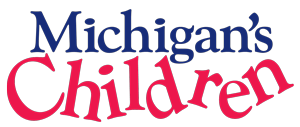Supporting Michigan’s Poorest Families with Young Children from Birth to Age Three
Last week, the U.S. Census Bureau released its 2012 data on poverty rates across the country and the data was bleak for Michigan. While our child poverty rate did not increase from the previous year, it remained stagnant, demonstrating that children and families continue to struggle during Michigan’s economic “recovery”. One out of four Michigan children continue to live in poverty and we know that even higher shares of our young children from birth to age three are more likely to be living in poverty than older children. What’s even more dire are that young children of color are still more likely to be living in poverty than white children. The consequences of childhood poverty – particularly in the first few years of life – have long been established and we know that the outcomes are not acceptable. With racial and economic disparities in cognitive achievement (aka the beginnings of the achievement gap) emerging as young as nine months of age, focusing on prevention efforts that mitigate the harmful effects of poverty are essential to ensuring that children are ready for school and life.
Business leaders and economists have become particularly effective advocates for high quality early childhood programming. The Children’s Leadership Council of Michigan played a vital role in securing Michigan’s $65 million expansion of the Great Start Readiness preschool program (GSRP). Nationally, a group of business leaders organized by ReadyNation is carrying a similar message in Washington, DC. And earlier this week at the ReadyNation Summit, Nobel Laureate economist James Heckman presented on the return on investment from high quality early childhood programming and reiterated that the greatest returns are seen from programs that start the earliest – programs that are targeted prenatally and during the infant and toddler stages.
Michigan is well poised to support its lowest-income young learners. We can do so by maximizing our GSRP investment to reap the greatest return by bolstering our efforts that begin before four years of age. We already have the infrastructure in place to expand voluntary home visiting services, thanks to the federal Maternal, Infant, Early Childhood Home Visiting program and Public Act 291 which requires the state to only support evidence-based or promising home visiting programs that are backed by research. Now, we must focus on expanding home visiting services to reach more of Michigan’s very challenged families, since we know that home visiting programs not only provide significant benefits for young children in terms of their healthy development and learning but also supports parents on a path towards economic stability. Furthermore, we have the infrastructure to bolster our child care program through Great Start to Quality – the state’s Quality Rating and Improvement System. Continued efforts to strengthen the child care subsidy system can ensure that parents can maintain stable employment to support their families while supporting children’s learning and development in high quality child care settings. These are two clear tools that Michigan can better utilize to mitigate the harmful consequences of poverty that, as James Heckman has said, provide the greatest return on taxpayer dollar. So what are we waiting for?
-Mina Hong
